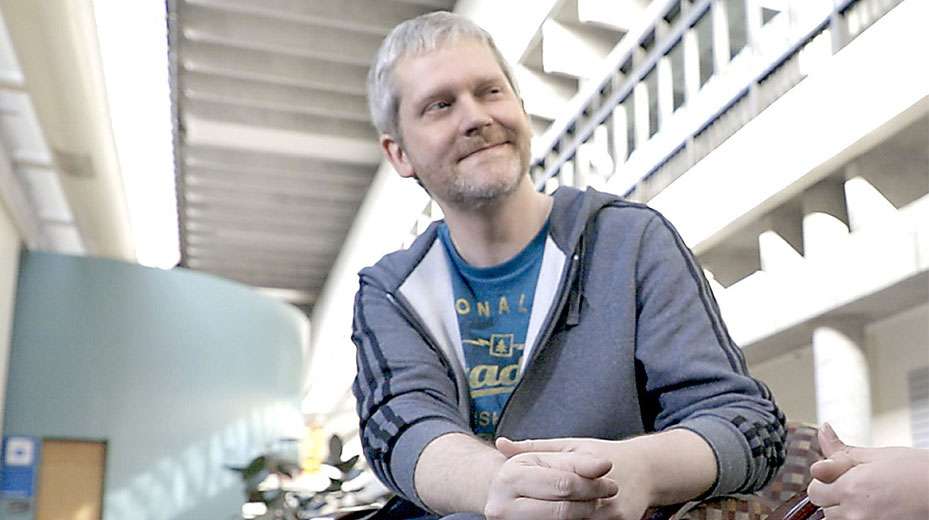
Current treatments for autism spectrum disorder (ASD) seek to reduce symptoms that interfere with daily functioning and quality of life.1 ASD affects each person differently, meaning that people with ASD have unique strengths and challenges and different treatment needs.1 Therefore, treatment plans usually involve multiple professionals and are catered toward the individual.
Treatments can be given in education, health, community, or home settings, or a combination of settings. It is important that providers communicate with each other and the person with ASD and their family to ensure that treatment goals and progress are meeting expectations.
As individuals with ASD exit from high school and grow into adulthood, additional services can help improve health and daily functioning, and facilitate social and community engagement. For some, supports to continue education, complete job training, find employment, and secure housing and transportation may be needed.
Types of Treatments
There are many types of treatments available. These treatments generally can be broken down into the following categories, although some treatments involve more than one approach:
Behavioral Approaches
Behavioral approaches focus on changing behaviors by understanding what happens before and after the behavior. Behavioral approaches have the most evidence for treating symptoms of ASD. They have become widely accepted among educators and healthcare professionals and are used in many schools and treatment clinics. A notable behavioral treatment for people with ASD is called Applied Behavior Analysis (ABA). ABA encourages desired behaviors and discourages undesired behaviors to improve a variety of skills. Progress is tracked and measured.
Two ABA teaching styles are Discrete Trial Training (DTT) and Pivotal Response Training (PRT).
- DTT uses step-by-step instructions to teach a desired behavior or response. Lessons are broken down into their simplest parts, and desired answers and behaviors are rewarded. Undesired answers and behaviors are ignored.
- PRT takes place in a natural setting rather than clinic setting. The goal of PRT is to improve a few “pivotal skills” that will help the person learn many other skills. One example of a pivotal skill is to initiate communication with others.
Developmental Approaches
Developmental approaches focus on improving specific developmental skills, such as language skills or physical skills, or a broader range of interconnected developmental abilities. Developmental approaches are often combined with behavioral approaches.
The most common developmental therapy for people with ASD is Speech and Language Therapy. Speech and Language Therapy helps to improve the person’s understanding and use of speech and language. Some people with ASD communicate verbally. Others may communicate through the use of signs, gestures, pictures, or an electronic communication device.
Occupational Therapy teaches skills that help the person live as independently as possible. Skills may include dressing, eating, bathing, and relating to people. Occupational therapy can also include:
- Sensory Integration Therapy to help improve responses to sensory input that may be restrictive or overwhelming.
- Physical Therapy can help improve physical skills, such as fine movements of the fingers or larger movements of the trunk and body.
The Early Start Denver Model (ESDM) is a broad developmental approach based on the principles of Applied Behavior Analysis. It is used with children 12-48 months of age. Parents and therapists use play, social exchanges, and shared attention in natural settings to improve language, social, and learning skills.
Educational Approaches
Educational treatments are given in a classroom setting. One type of educational approach is the Treatment and Education of Autistic and Related Communication-Handicapped Children (TEACCH) approach. TEACCH is based on the idea that people with autism thrive on consistency and visual learning. It provides teachers with ways to adjust the classroom structure and improve academic and other outcomes. For example, daily routines can be written or drawn and placed in clear sight. Boundaries can be set around learning stations. Verbal instructions can be complimented with visual instructions or physical demonstrations.
Social-Relational Approaches
Social-relational treatments focus on improving social skills and building emotional bonds. Some social-relational approaches involve parents or peer mentors.
- The Developmental, Individual Differences, Relationship-Based model (also called “Floor time”) encourages parents and therapists to follow the interests of the individual to expand opportunities for communication.
- The Relationship Development Intervention (RDI) model involves activities that increase motivation, interest, and abilities to participate in shared social interactions.
- Social Stories provide simple descriptions of what to expect in a social situation.
- Social Skills Groups provide opportunities for people with ASD to practice social skills in a structured environment.
Pharmacological Approaches
There are no medications that treat the core symptoms of ASD. Some medications treat co-occurring symptoms that can help people with ASD function better. For example, medication might help manage high energy levels, inability to focus, or self-harming behavior, such as head banging or hand biting. Medication can also help manage co-occurring psychological conditions, such as anxiety or depression, in addition to medical conditions such as seizures, sleep problems, or stomach or other gastrointestinal problems.
It is important to work with a doctor who has experience in treating people with ASD when considering the use of medication. This applies to both prescription medication and over-the-counter medication. Individuals, families, and doctors must work together to monitor progress and reactions to be sure that negative side effects of the medication do not outweigh the benefits.
Psychological Approaches
Psychological approaches can help people with ASD cope with anxiety, depression, and other mental health issues. Cognitive-Behavior Therapy (CBT) is one psychological approach that focuses on learning the connections between thoughts, feelings, and behaviors. During CBT, a therapist and the individual work together to identify goals and then change how the person thinks about a situation to change how they react to the situation.
Complementary and Alternative Treatments
Some individuals and parents use treatments that do not fit into any of the other categories. These treatments are known as Complementary and Alternative treatments. Complementary and alternative treatments are often used to supplement more traditional approaches. They might include special diets, herbal supplements, chiropractic care, animal therapy, arts therapy, mindfulness, or relaxation therapies. Individuals and families should always talk to their doctor before starting a complementary and alternative treatment.
There may be other treatments available for individuals with ASD. Talk to a doctor or healthcare provider to learn more.
For more information you can visit:
American Academy of Pediatrics Council on Children with Disabilities: https://pediatrics.aappublications.org/content/145/1/e20193447external icon
Autism Society: https://www.autism-society.org/living-with-autism/treatment-options/external icon
Autism Speaks: https://www.autismspeaks.org/treatments-autismexternal icon
Interagency Autism Coordinating Committee: https://iacc.hhs.gov/publications/publications-analysis/2012/treatments.shtmlexternal icon
National Institute on Child Health and Human Development: https://www.nichd.nih.gov/health/topics/autism/conditioninfo/treatmentsexternal icon
References
- Hyman, S.L., Levy, S.E., Myers, S.M., & AAP Council on Children with Disabilities, Section on developmental and behavioral pediatrics. (2020). Identification, evaluation, and management of children with autism spectrum disorder. Pediatrics, 145(1), e20193447.
Types of therapy for autism
There are a number of therapies that can support children with autism. The therapy recommended per child may vary based on age, personality, needs and range of ability.
Autism may occur with a variety of mental health and physiological conditions. Cooperation among therapies and providers can prove beneficial in many of these situations.
Applied Behavior Analysis (ABA)
As the most commonly used therapy for children with autism, ABA develops social skills, improves language competency, and enhances good behavior using positive reinforcement techniques, meaningful rewards, and consequences.
Following are some of the most common ABA objectives:
- Increased social skills
- Improved expressive and receptive communication effectiveness
- Enhanced hygiene and self-care
- Teaching cooperative behavior when playing with others
- Maladaptive behavior reduction
The most complete autism intervention package is ABA therapy. ABA therapy is very important for children with autism as it addresses topics such as effective communication, skill imitation, cognitive abilities, self-regulation, recreational and interpersonal skills, behavioral management, and safety skills.
Relationship Development Intervention (RDI)
This methodology educates children with autism on how to form bonds with their parents and other family members. Psychological, social, and flexible thinking are all components of this family-based therapy. Children must also learn to cope with transitions, which can be particularly difficult. Parents undergo instruction and become their child’s primary therapist as part of the RDI program.
Play therapy
Autism play therapy differs from play therapy designed for other illnesses. Therapists are far more prescriptive in this type of therapy for autism than for anxiety and other mental health conditions. Play therapy helps children with autism learn to interact with people in a way that they understand: playing. Autism affects how children interact with other children; for example, an individual with autism may concentrate primarily on one aspect of a toy and seldom engages in pretend play.
A therapist can help children engage with others by helping them widen their focus and approach. This type of therapy can bring a child out of a narrow play scope and into a world of collaborative experiences and relationships. Kids explore their surroundings, feelings, and relationships by developing their interests.
Equestrian therapy
Often known as therapeutic horseback riding, Equestrian Therapy allows children with autism to ride horses in a safe and non-threatening environment. The therapist is in charge of both the horse and the child. According to research, therapeutic horseback riding improves social and communication skills, while reducing irritability and hyperactivity.
Speech therapy
People with autism may benefit from speech therapy; however, it isn’t always the most effective strategy as it may not be possible for individuals who suffer from severe autism to participate. Higher-functioning individuals may benefit most from speech therapy, and it might assist children and adults with ASD in overcoming social isolation.
Sometimes, an individual with autism may have a comorbid diagnosis that requires speech therapy. In these circumstances, It can be beneficial to use a therapy type that treats both autism and the health condition itself. Speech and language therapists or other professionals can provide these treatments.
Cognitive-Behavioral Therapy (CBT)
CBT is a common type of talk therapy where a mental health counselor works with individuals in a select number of sessions, which can last over 8-12 weeks, depending on the child. Therapists are constantly refining the technique to make it more consistently effective in dealing with anxiety and other issues.
Music therapy
Music may be able to assist individuals with autism in relating to their own and others’ emotions. Music therapy involves working with a therapist while listening to music to help enhance emotional connections.
Sensory integration
Autism can affect how sensory information is processed which may result in sensory over-stimulation or under-stimulation. Sensory input can manifest itself in actions that are difficult to explain. People with ASD can use sensory integration to control sensory input and help them better manage sensory overload.




